Tags
Alaska, Alfred Lord Tennyson, Asia, Australia, Bill Edwardes, botany, climate, commerce, découpage, E. C. Alexander, endangered, English, Europe, flora, flower specimens, flowers, France, French, German, Germany, Hebrew, herbaria, Holy Land, International Pressed Flower Art Society, J. Willard Marriott Library, Japan, Jerusalem, Joyce Fenton, Lyuba Basin, May, Mexico, Middle East, nomenclature, olive wood, Oshibana, plant species, poppies, Pressed Flower Craft Guild, pressed flowers, repository, Russian, Ruth Miller Staats, Samurai, San Francisco, seeds, Silk Road, sunflowers, taxonomies, The Popular Bookstore, The University of Utah, tourism, United Kingdom, United States, Valdez, Valdez Museum Historical Archive, vegetation, Worldwide Pressed Flower Guide
“But I must gather knots of flowers and buds, and garlands gay;
For I’m to be Queen o’ the May, mother, I’m to be Queen o’ the May.”
– Alfred Lord Tennyson, “The May Queen”
When was the last time you stopped to smell the flowers? I did it just two days ago, when the purple and white lilac bushes in front of my house produced such an aroma after the rain that I had to stop in my tracks to take it in. Some days I’ll pick the poppies and sunflowers that grow wild in the backyard and set them in a vase on the kitchen table, and if I’m feeling particularly extra, I will even go out and buy an arrangement to add some oomph to the room.
Although my allergies have been getting worse and worse every year, my enthusiasm for flora has yet to subside. I’ve been enjoying the slower campus days at The University of Utah, when I can wander around outside the library and take in all of the new blooms. I am always impressed with the assortment of flowers lining the pathways, some of which I recognize as native to the state, while others look unfamiliar, yet still alluring.
Natural Flowers of the Holy Land
Jerusalem, 1900s
QK 378 N37 1900z
We might find flowers attractive for a number of reasons ranging from color, shape, texture or smell, but did you know the craft of pressing flowers is actually an ancient art that dates back to 16thcentury? It is said that Samurai warriors in Japan once practiced this art, called Oshibana, as part of their discipline to promote patience and harmony with nature, as well as to enhance their powers of concentration.
The art of drawing with petals gradually spread from Asia to the Middle East along growing trade networks of the Silk Road. One outcome of this global commerce and tourism were elaborate souvenir books, popular in the late 19th century, Jerusalem. Different renditions of Flowers of the Holy Land combined photographs of holy sites in and around Jerusalem with pressed flowers gathered from those sites. These flowers were artistically formatted, bound between olive wood covers, and included translations from Hebrew into French, German, English and Russian, as they were sold to visitors coming from different parts of the world.
Flowers of the Holy Land
Jerusalem, 1900s
QK89 F56
Around the same time, botanists in Europe began systematically collecting and preserving flower specimens from all over the world. No longer a simple art form, the pressed plant books allowed scientists to study the flora of other countries and understand the variety of plant taxonomies, geographic distributions, and to develop an efficient and stable nomenclature. Furthermore, the books are able to preserve a record of change in vegetation over time for future scientists who are tracking changes in climate and human impact. Some books can even be viable repositories, holding seeds of extinct or endangered plant species. These specimen books, or herbaria, are not just pretty to look at for they contain crucial knowledge on every page.
A Collection of Wild Flower of California
E.C. Alexander
San Francisco: The Popular Bookstore, 1895
QK 89 A375
Anyone can gather flowers and create their own pressed flower book. Like Ruth Miller Staats, a resident of Valdez, Alaska who sold cards, artwork and booklets of pressed flowers to tourists during the 1930s and 1940s. Although Ruth had been paralyzed from the waist down following an airplane crash (she had sustained a double compound fracture of both legs, fracture of the pelvis, and a fractured lumbar vertebrae), her friends and neighbors gathered flowers for her to compile the pieces. Many of her items can now be found in the Valdez Museum Historical Archive.
Wild Flowers of Alaska
Ruth M. Staats
Valdez, Alaska, 1930s
QK 89 S73
The craft of pressing flowers can also extend beyond books. Petals and leaves can be applied to trays and other wood furnishings using the technique of découpage. Those who have a deep interest in the art can join the Pressed Flower Craft Guild, founded by Joyce Fenton and Bill Edwardes in 1983. Other organizations include the International Pressed Flower Art Society and the Worldwide Pressed Flower Guild, with members coming from countries such as Japan, Mexico, France, Germany, Australia, the United Kingdom and United States.
So come by and smell the flowers and allow yourself to appreciate the little things in life. Reflect on what is beautiful, fragile and simple, such as this small collection of books.
~Contributed by Lyuba Basin, Rare Books

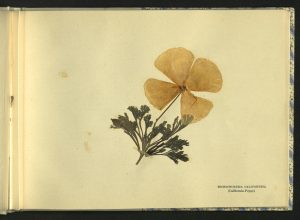
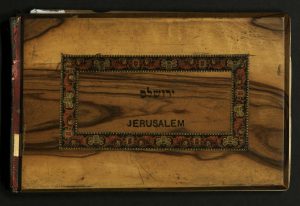
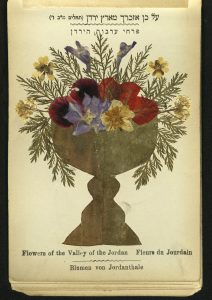
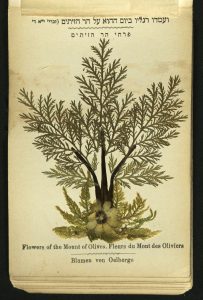
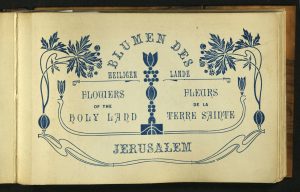
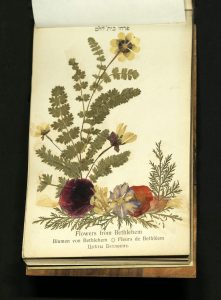
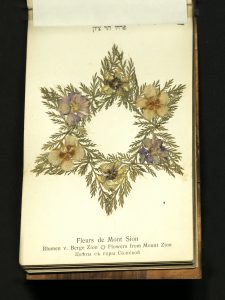
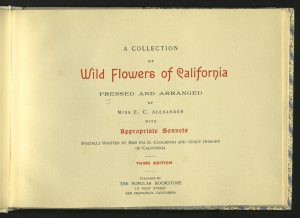
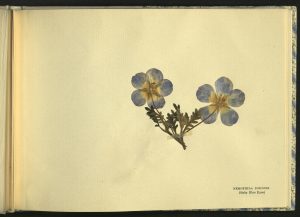
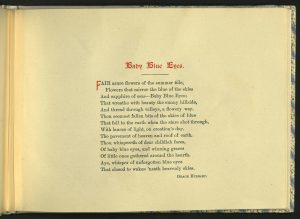
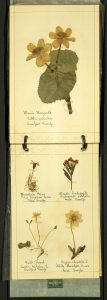
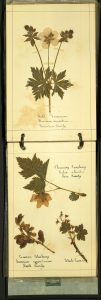
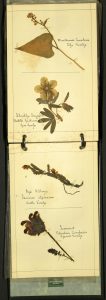
You must be logged in to post a comment.